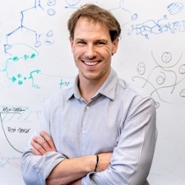Lecture
LIC Lecture: Chemically fueled droplets; towards the synthesis of life
- Date
- Monday 24 October 2022
- Time
- Location
-
Gorlaeus Building
Einsteinweg 55
2333 CC Leiden - Room
- DM1.15
Abstract
I’m amazed by the beauty and complexity of biology. Even though we, supramolecular chemists, have the building blocks that biology uses at our disposal, somehow, we cannot recreate biology. Arguably, we are far from creating life. Life is more than a complicated mixture of self-assembled molecules.
To get closer to the synthesis of life, I have been working on the concept of chemically fueled self-assembly. Here, molecular architectures are kept from equilibrium at the expense of chemical energy. By doing so, we can expect life-like behavior, like autonomy, decision-making, memory, adaptivity, and even evolution in synthetic materials.
In this lecture, I will discuss what chemically fueled self-assembly is and the chemical reaction cycles we have developed. I will describe rules on how to design molecules that can assemble at the expense of energy. I will share the lessons we have learned so far, and I will share my vision of how, one day, this may result in the synthesis of life.

Biography
I was born in ’84 to two ex-pat parents in Brunei. I grew up in the Scottish highlands and Dutch lowlands. In the Netherlands, I started my B.Sc. to Ph.D. trajectory. After a postdoctoral stay in the US’ midwest, TUM welcomed me to start my research group.
With my group, I am developing tools to regulate the self-assembly of molecules the way biology does. I believe this is the way to create life-like materials, i.e., materials that make self-heal, self-replicate and make decisions autonomously. I also think we need these tools to synthesize life which I am fascinated about. Doing so will help us understand what is life and how did it emerge?
We are best known for developing chemically fueled reaction cycles that control the ability of molecules to assemble or phase separate. The resulting assemblies or phase-separated droplets show exciting new properties, such as their intrinsic ability to self-heal or controllable lifetime. Moreover, the chemically fueled assemblies manifest features we usually associate with living cells, like the ability to emerge, decay, or even self-divide.
B.Sc.-M.Sc.: University of Groningen
Ph.D.: Tu Delft
Postdoc: Northwestern University
